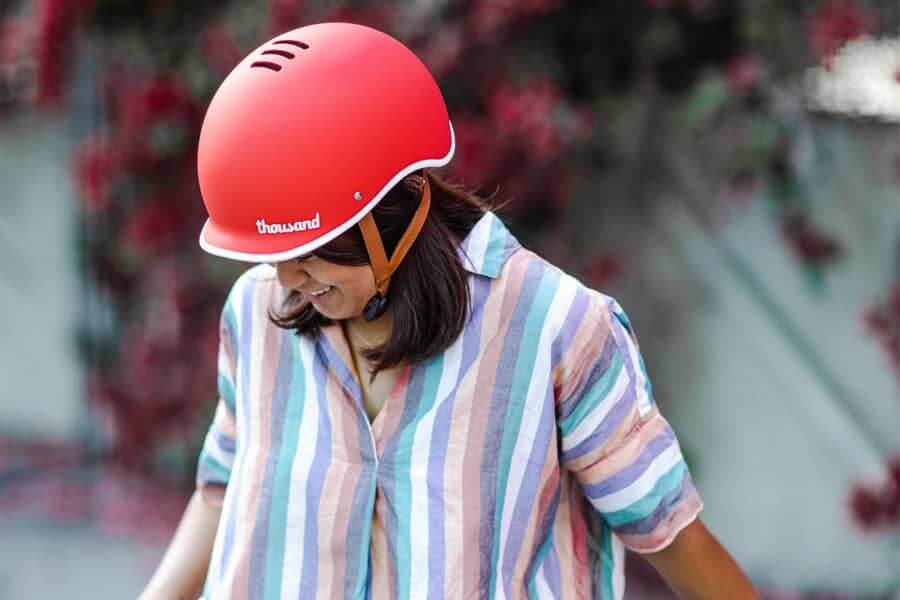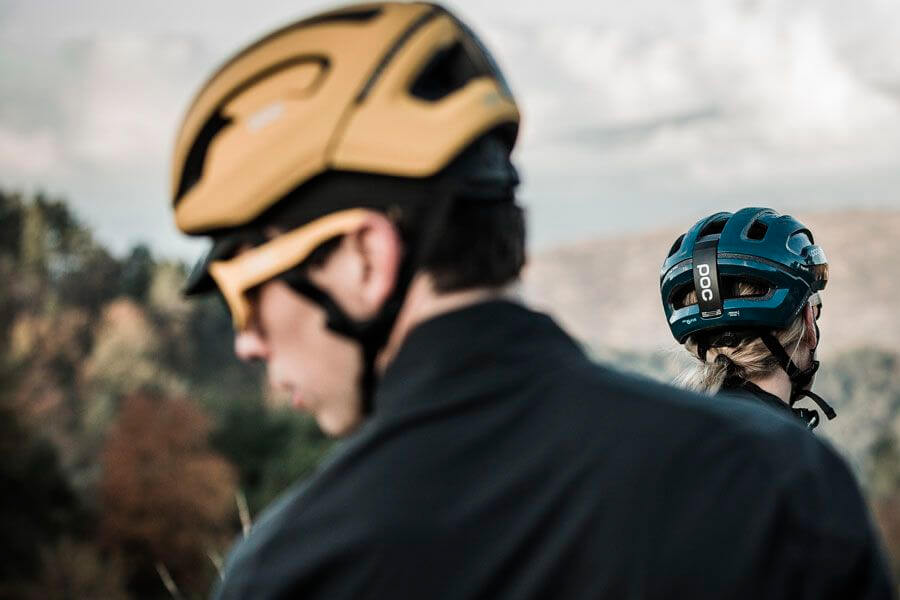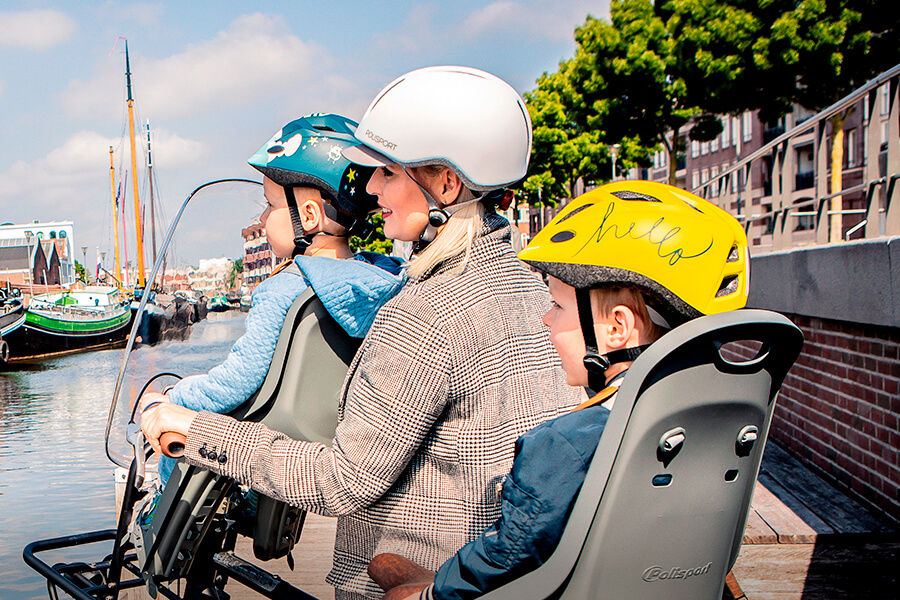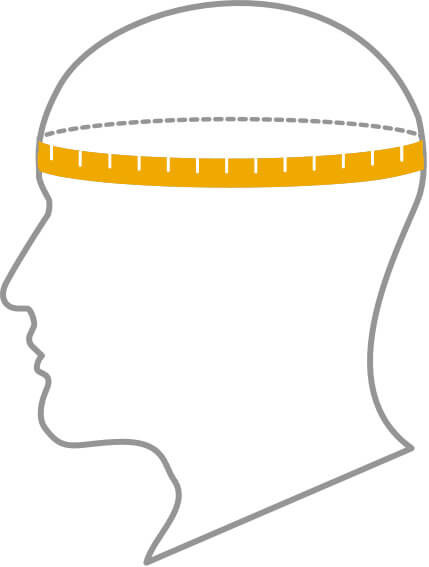Everything you need to know about buying a bicycle helmet
If you have just bought a bicycle for yourself or your family, there are always questions about the use of helmets for urban or mountain biking.
Is it mandatory to wear a bicycle helmet? from what age should I put a helmet on my child? do i have to wear a helmet on my bike in the city? Which helmet is safer? What are the characteristics of a good cycling helmet?
Contenidos
Is it mandatory to wear a bicycle helmet?
Currently, in Spain this aspect is defined in the general Traffic Law that applies throughout the country. Bicycle helmets are ALWAYS recommended and mandatory for all persons under 16 years of age. In other words, your child must always wear a helmet, regardless of the road you are riding on.
For adults, it is mandatory when driving on interurban roads, but it is not mandatory if you are an adult and drive in the city. From Biciclásica we will always recommend that you use it, safety comes first and if you always get used to carry it, you will see that you will get rid of any unexpected scare, besides becoming the essential accessory of your bike. Stick around for the post and we’ll recommend bike helmets that will fit your lifestyle.
What should I look for when buying a bicycle helmet?
Okay, now that it is clear that it is always advisable to wear a helmet, what should I look for when buying a good helmet?
Materials: go for polystyrene and polypropylene helmets, resistant materials that in general do not contribute excessive weight and are comfortable to fit.
Technology: prices vary greatly between helmet categories and this is partly due to the impact protection technology they develop. More expensive is not always better, but be wary of bargains and excessively cheap prices, they will not have a good mold or ventilation system.
Sizing: it doesn’t matter how good a helmet is if it doesn’t fit you perfectly. To find out what size helmet you wear, check this other post: How do I know what size I wear?
Generally speaking, you should take a meter and place it around the head at about the level of the forehead, above the eyebrows. Check the helmet manufacturer’s sizing guide to compare the cm with their sizes. More on this below.
The best helmet brands for your bike
Some examples of good bicycle helmets.

Thousand Helmets
The helmet par excellence for the urban cyclist. Thousand is synonymous with reliability, safety and security. They are urban helmets that offer an anti-theft system with its Poplock closure – A hole in the helmet to be able to attach it to the bicycle.
With eco-friendly straps made of vegan leather, they are a very comfortable material made of ecological microfiber. They have a science fiction ventilation system.
It will stay cool with seven air vents and three internal cooling channels. They have both junior and adult models at very competitive prices in terms of the safety they offer.
https://www.biciclasica.com/casco-thousand-junior-power-pink.html#/66-talla-xs

POC Helmets
More focused on road cycling and with a more technical design, with its liner it provides excellent protection and a very light weight, in addition to the polycarbonate shell that improves the structural integrity of the helmet.
https://www.deporvillage.com/casco-poc-omne-air-mips

Polisport Helmets
They are helmets for mixed use, with a classic style and robust design. They are very versatile helmets that are sold in many stores in Spain, you can find them at affordable prices for both children and adults:
https://www.polisport.com/es/bicicleta/cascos_590-582.html
https://www.biciclasica.com/casco-de-bicicleta-polisport-urban-radical-blanco.html
How to choose your helmet size
The helmet is a vital accessory for a cyclist and in many cases, a must for your cycling trips. Follow the recommendations below to know exactly what size helmet you need.
The helmet should fit snugly on your head without constricting and the strap should fit under the chin, allowing neck movement, not loose or moving. The rider’s forehead should always be practically covered.

To buy your helmet, in many cases it will be useful to measure your head. To do this, use a tape measure and measure the part of the head where the circumference is greatest (forehead area, just above the eyebrows).
Write down the centimeters resulting from the measurement and compare the result with the manufacturer’s size guides to know which size corresponds to each measurement in centimeters.
For example, a diameter between approximately 50 and 55 is usually size S or XS depending on the brand.
There are helmets that fit with a rubber band that covers the circumference of the helmet and is adjusted with a rear thread.
We recommend that you take the time to know your helmet size: two riders can wear the same size helmet, but no two heads are the same and not wearing the right size can end up compromising the rider’s safety in an impact, as well as being annoying or causing headaches.